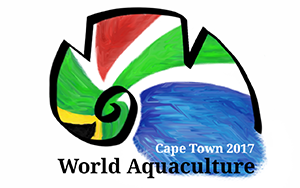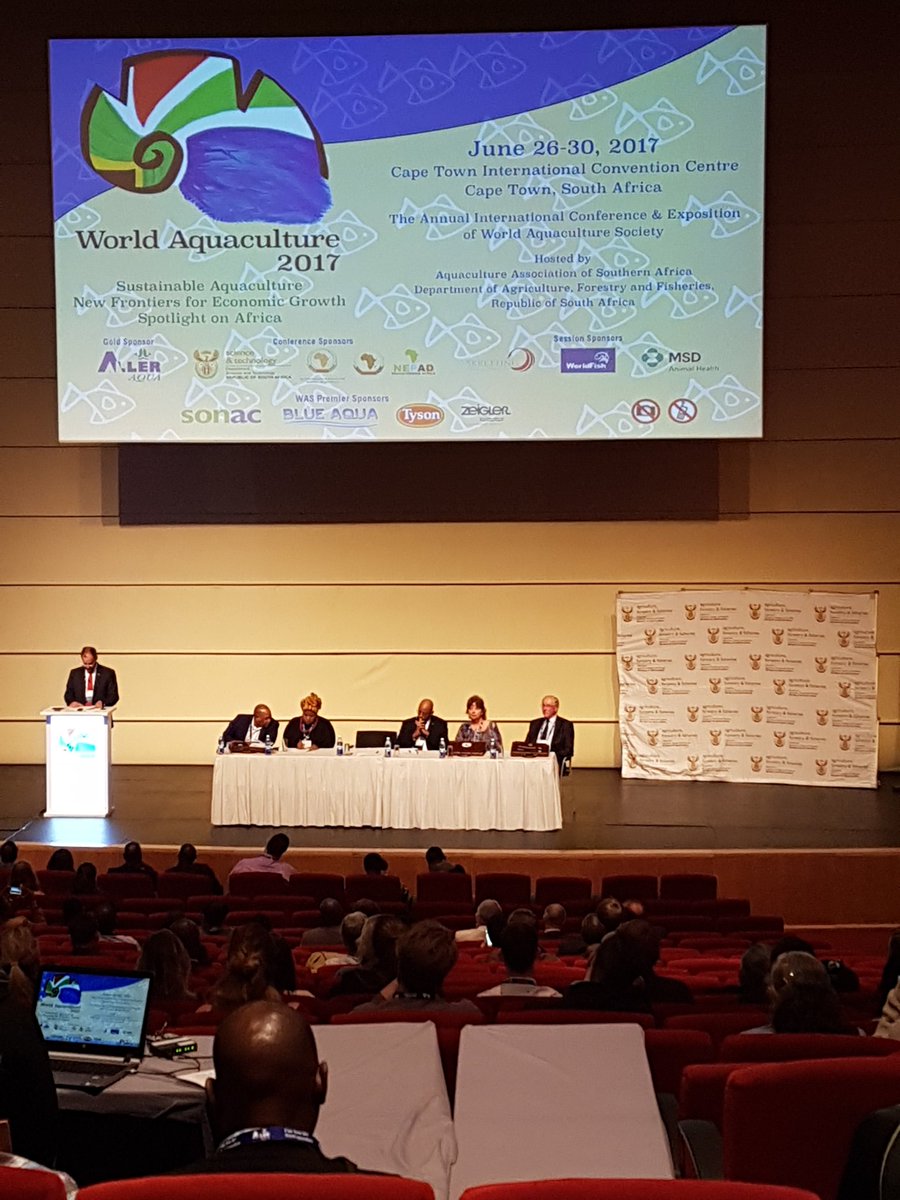26-30 June 2017. Cape Town, South Africa. Themed “Sustainable Aquaculture – New Frontiers for Economic Growth – Spotlight on Africa”, World Aquaculture 2017 brought together some 3,000 industry, academic and government delegates from the 100 member countries of the World Aquaculture Society (WAS).
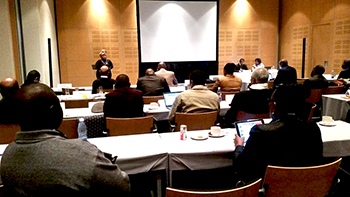 The meeting was attended by 11 SADC Member States, viz. Angola, Botswana, Malawi, Mauritius, Namibia, Seychelles, South Africa, Swaziland, Tanzania, Zambia and Zimbabwe. Other countries which participated in the meeting include Kenya, Nigeria and Uganda.
The meeting was attended by 11 SADC Member States, viz. Angola, Botswana, Malawi, Mauritius, Namibia, Seychelles, South Africa, Swaziland, Tanzania, Zambia and Zimbabwe. Other countries which participated in the meeting include Kenya, Nigeria and Uganda. 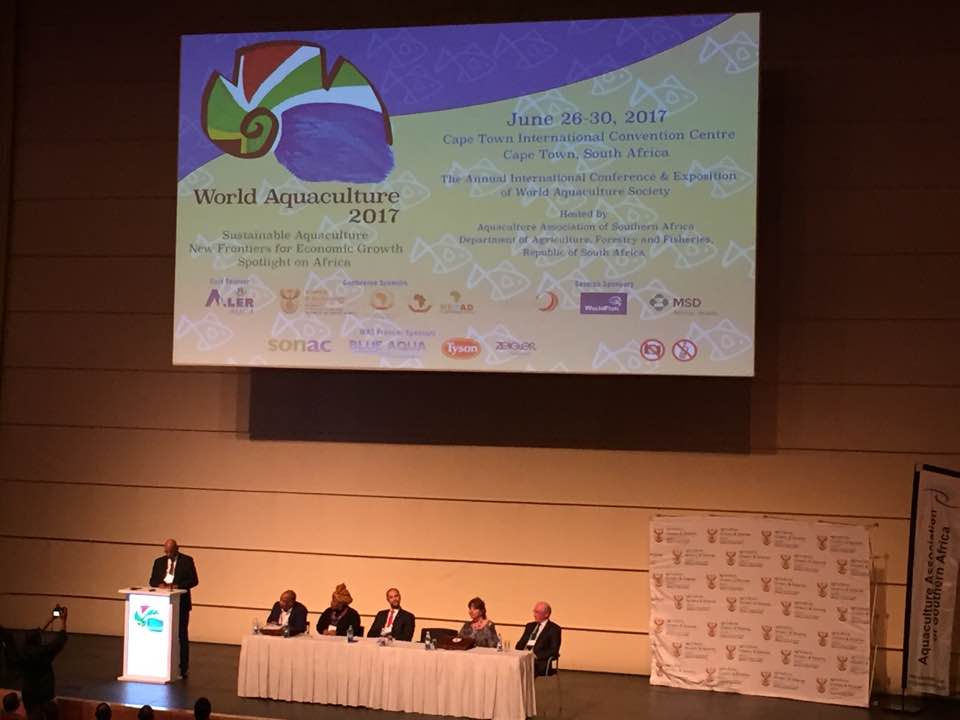 Development partners in attendance included the African Union Inter-African Bureau for Animal Resources (AU-IBAR), Centre for Coordination of Agricultural Research and Development in Southern Africa (CCARDESA), the Food and Agriculture Organization of the United Nations (FAO), Intergovernmental Agency for Development (IGAD), Indian Ocean Commission (IOC) SmartFish Programme, NEPAD Planning and Coordination Agency (NPCA), Bill and Melinda Gates Foundation, and WorldFish.
Development partners in attendance included the African Union Inter-African Bureau for Animal Resources (AU-IBAR), Centre for Coordination of Agricultural Research and Development in Southern Africa (CCARDESA), the Food and Agriculture Organization of the United Nations (FAO), Intergovernmental Agency for Development (IGAD), Indian Ocean Commission (IOC) SmartFish Programme, NEPAD Planning and Coordination Agency (NPCA), Bill and Melinda Gates Foundation, and WorldFish.
 Aquaculture is increasingly important as an environmentally sustainable way to meet global demand for fisheries products, while Sub-Saharan Africa’s vast inland waters and coastlines – home to a small but rapidly growing aquaculture sector – present a largely untapped opportunity to contribute to the nutrition and socio-economic development needs of the region.
Aquaculture is increasingly important as an environmentally sustainable way to meet global demand for fisheries products, while Sub-Saharan Africa’s vast inland waters and coastlines – home to a small but rapidly growing aquaculture sector – present a largely untapped opportunity to contribute to the nutrition and socio-economic development needs of the region. Key programmes which were discussed and adopted include:
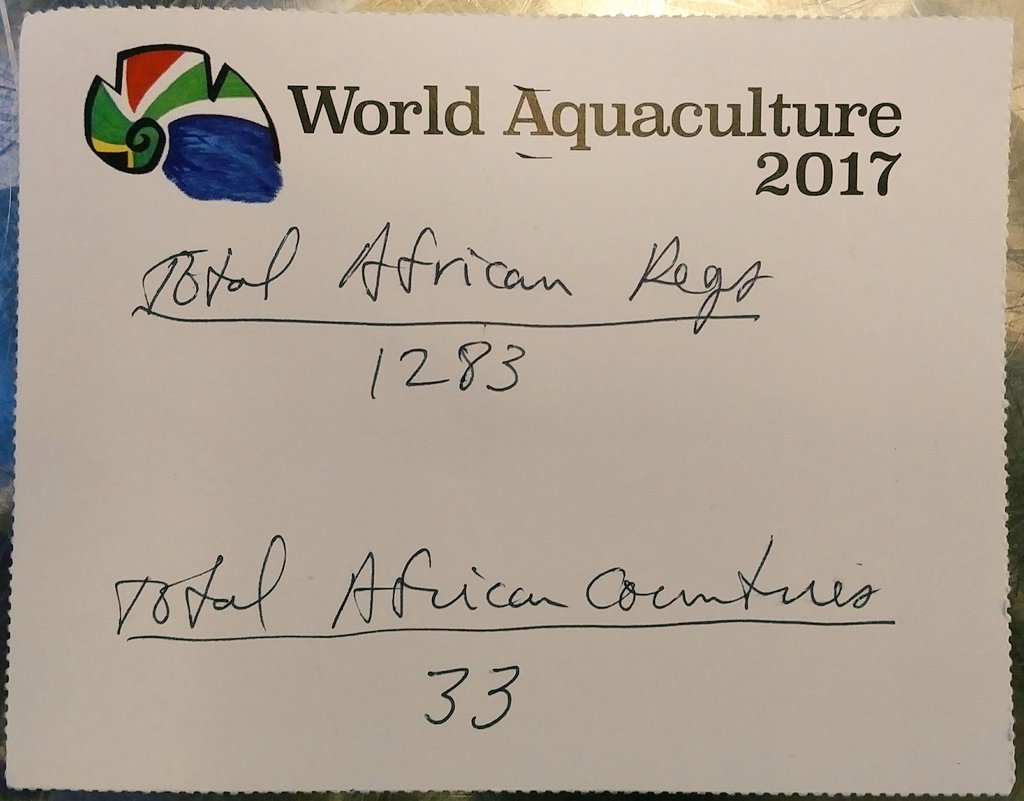
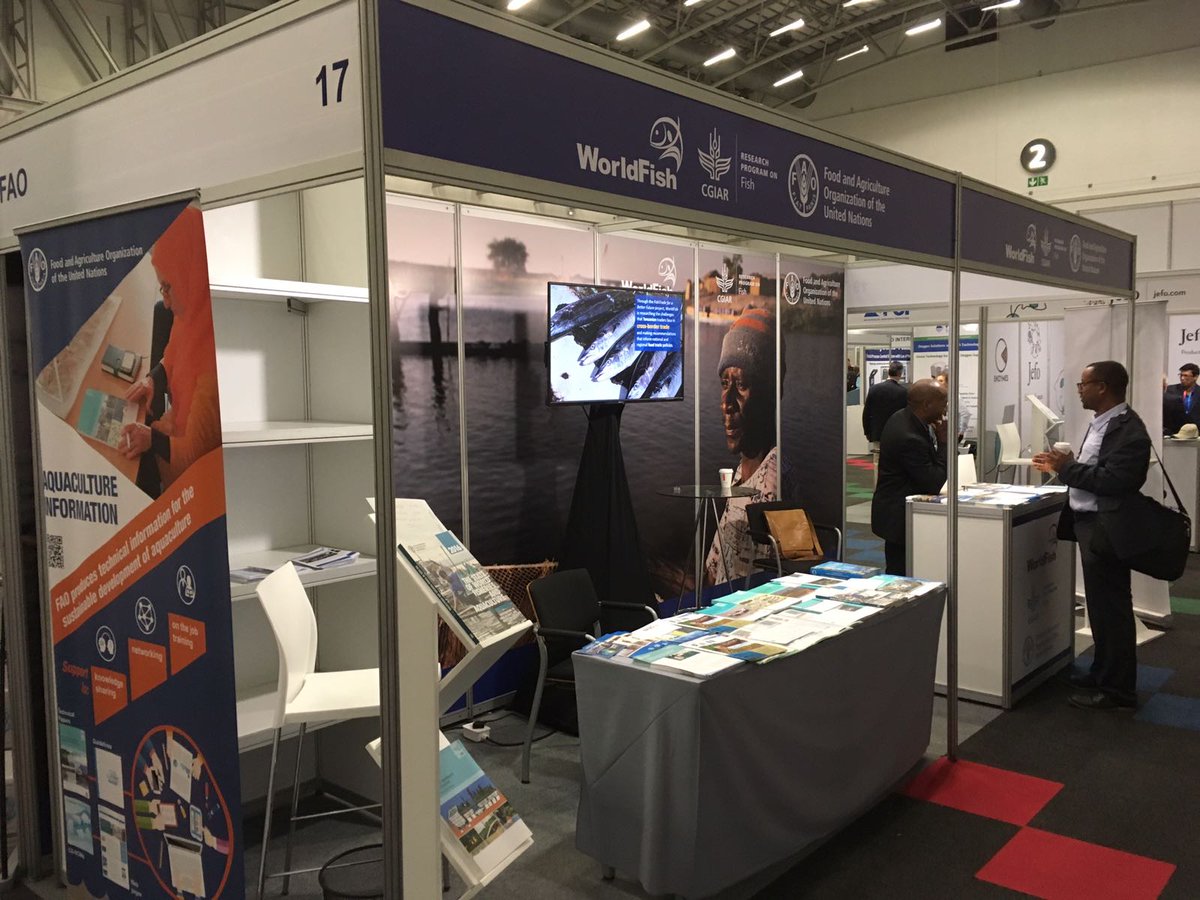
Keynote Speaker profiles
African Extrusion Seminar Aquatic Feeds
A special session has been organized for the WAS Annual Meeting in Cape Town, RSA to review the status, growth potential and risk profiles of African aquaculture investments, with a focus on the amounts and types of capital needed to help the sector produce revenues, jobs and fish for a growing continent. The session will feature presentations from aquaculture specialists from a range of financial and development institutions interested in African aquaculture, and plenty of time for questions and discussion with a view to helping farmers better understand the constraints for bankers, and helping bankers understand the opportunities in the aquaculture sector.
Sustainable Aquaculture – New Frontiers for Economic Growth.
AQUA Spark, the Dutch based aquaculture investors, announced a $15 million Africa fund on the first day of the World Aquaculture Society conference in Cape Town. In a partnership with Msingi, an East African economic organisation, the fund will focus on tilapia and catfish producers, and will invest in all farming aspects.
Aqua Spark’s Amy Novogratz, launching the fund during a seminar on financing African aquaculture, said she and her partner Mike Velings were looking for additional investors to come on board.
The aim is to build infrastructure ‘for a thriving sub-Saharan aquaculture sector’, and help provide farmers access to global markets and to Aqua Spark’s portfolio of companies, which includes feed manufacturers. Aqua Spark is the only investment fund in the world dedicated to aquaculture, said Novogratz, and it considers thousands of applications before deciding which companies to support.
It already backs a tilapia farm in Mozambique and has interests in Indonesia and in an Indian Ocean sea cucumber farm, among others.
Impact of Mycotoxins on Aquaculture Fish Species: A Review
Source: PAEPARD FEED
by secretary
by secretary
by secretary
by secretary
by secretary
by secretary
by secretary
by secretary
by secretary
by secretary
by secretary
by secretary
by secretary
by secretary
by secretary
by secretary
by secretary
by secretary
by secretary
by secretary
by secretary
by secretary
by secretary
by secretary
by secretary
by secretary
by secretary
by secretary
by secretary
by secretary
by secretary
by secretary
by secretary
by secretary
by secretary
by secretary
by secretary
by secretary
by secretary
by secretary
by secretary
by secretary
by secretary
by secretary
by secretary
by secretary
by secretary
by secretary
by secretary
by secretary
by secretary
by secretary
by secretary
by secretary
by secretary
by secretary
by secretary
by secretary
by secretary
by secretary
by secretary
by secretary
by secretary
by secretary
by secretary
by secretary
by secretary
by secretary
by secretary
by secretary
by secretary
by secretary
by secretary
by secretary
by secretary
by secretary
by secretary
by secretary
by secretary
by secretary
by secretary
by secretary
by secretary
by secretary
by secretary
by secretary
by secretary
by secretary
by secretary
by secretary
by secretary
by secretary
by secretary
by secretary
by secretary
by secretary
by secretary
by secretary
by secretary
by secretary
by secretary
by secretary
by secretary
by secretary
by secretary
by secretary
by secretary
by secretary
by secretary
by secretary
by secretary
by secretary
by secretary
by secretary
by secretary
by secretary
by secretary
by secretary
by secretary
by secretary
by secretary
by secretary
by secretary
by secretary
by secretary
by secretary
by secretary
by secretary
by secretary
by secretary
by secretary
by secretary
by secretary
by secretary
by secretary
by secretary
by secretary
by secretary
by secretary
by secretary
by secretary
by secretary
by secretary
by secretary
by secretary
by secretary
by secretary
by secretary
by secretary
by secretary
by secretary
by secretary
by secretary
by secretary
by secretary
by secretary
by secretary
by secretary
by secretary
by secretary
by secretary
by secretary
by secretary
by secretary
by secretary
by secretary
by secretary
by secretary
by secretary
by secretary
by secretary
by secretary
by secretary
by secretary
by secretary
by secretary
by secretary
by secretary
by secretary
by secretary
by secretary
by secretary
by secretary
by secretary
by secretary
by secretary
by secretary
by secretary
by secretary
by secretary
by secretary
by secretary
by secretary
by secretary
by secretary
by secretary
by secretary
by secretary
by secretary
by secretary
by secretary
by secretary
by secretary
by secretary
by secretary
by secretary
by secretary
by secretary
by secretary
by secretary
by secretary
by secretary
by secretary
by secretary
by secretary
by secretary
by secretary
by secretary
by secretary
by secretary
by secretary
by secretary
by secretary
by secretary
by secretary
by secretary
by secretary
by secretary
by secretary
by secretary
by secretary
by secretary
by secretary
by secretary
by secretary
by secretary
by secretary
by secretary
by secretary
by secretary
by secretary
by secretary
by secretary
by secretary
by secretary
by secretary
by secretary
by secretary
by secretary
by secretary
by secretary
by secretary
by secretary
by secretary
by secretary
by secretary
by secretary
by secretary
by secretary
by secretary
by secretary
by secretary
by secretary
by secretary
by secretary
by secretary
by secretary
by secretary
by secretary
by secretary
by secretary
by secretary
by secretary
by secretary
by secretary
by secretary
by secretary
by secretary
by secretary
by secretary
by secretary
by secretary
by secretary
by secretary
by secretary
by secretary
by secretary
by secretary
by secretary
by secretary
by secretary
by secretary
by secretary
by secretary
by secretary
by secretary
by secretary
by secretary
by secretary
by secretary
by secretary
by secretary
by secretary
by secretary
by secretary
by secretary
by secretary
by secretary
by secretary
by secretary
by secretary
by secretary
by secretary
by secretary
by secretary
by secretary
by secretary
by secretary
by secretary
by secretary
by secretary
by secretary
by secretary
by secretary
by secretary
by secretary
by secretary
by secretary
by secretary
by secretary
by secretary
by secretary
by secretary
by secretary
by secretary
by secretary
by secretary
by secretary
by secretary
by secretary
by secretary
by secretary
by secretary
by secretary
by secretary
by secretary
by secretary
by secretary
by secretary
by secretary
by secretary
by secretary
by secretary
by secretary
by secretary
by secretary
by secretary
by secretary
by secretary
by secretary
by secretary
by secretary
by secretary
by secretary
by secretary
by secretary
by secretary
by secretary
by secretary
by secretary
by secretary
by secretary
by secretary
by secretary
by secretary
by secretary
by secretary
by secretary
by secretary
by secretary
by secretary
by secretary
by secretary
by secretary
by secretary
by secretary
by secretary
by secretary
by secretary
by secretary
by secretary
by secretary
by secretary
by secretary
by secretary
by secretary
by secretary
by secretary
by secretary
by secretary
by secretary
by secretary
by secretary
by secretary
by secretary
by secretary
by secretary
by secretary
by secretary
by secretary
by secretary
by secretary
by secretary
by secretary
by secretary
by secretary
by secretary
by secretary
by secretary
by secretary
by secretary
by secretary
by secretary
by secretary
by secretary
by secretary
by secretary
by secretary
by secretary
by secretary
by secretary
by secretary
by secretary
by secretary
by secretary
by secretary
by secretary
by secretary
by secretary
by secretary
by secretary
by secretary
by secretary
by secretary
by secretary
by secretary
by secretary
by secretary
by secretary
by secretary
by secretary
by secretary
by secretary
by secretary
by secretary
by secretary
by secretary
by secretary
by secretary
by secretary
by secretary
by secretary
by secretary
by secretary
by secretary
by secretary
by secretary
by secretary
by secretary
by secretary
by secretary
by secretary
by secretary
by secretary
by secretary
by secretary
by secretary
by secretary
by secretary
by secretary
by secretary
by secretary
by secretary
by secretary
by secretary
by secretary
by secretary
by secretary
by secretary
by secretary
by secretary
by secretary
by secretary
by secretary
by secretary
by secretary
by secretary
by secretary
by secretary
by secretary
by secretary
by secretary
by secretary
by secretary
by secretary
by secretary
by secretary
by secretary
by secretary
by secretary
by secretary
by secretary
by secretary
by secretary
by secretary
by secretary
by secretary
by secretary
by secretary
by secretary
by secretary
by secretary
by secretary
by secretary
by secretary
by secretary
by secretary
by secretary
by secretary
by secretary
by secretary
by secretary
by secretary
by secretary
by secretary
by secretary
by secretary
by secretary
by secretary
by secretary
by secretary
by secretary
by secretary
by secretary
by secretary
by secretary
by secretary
by secretary
by secretary
by secretary
by secretary
by secretary
by secretary
by secretary
by secretary
by secretary
by secretary
by secretary
by secretary
by secretary
by secretary
by secretary
by secretary
by secretary
by secretary
by secretary
by secretary
by secretary
by secretary
by secretary
by secretary
by secretary
by secretary
by secretary
by secretary
by secretary
by secretary
by secretary
by secretary
by secretary
by secretary
by secretary
by secretary
by secretary
by secretary
by secretary
by secretary
by secretary
by secretary
by secretary
by secretary
by secretary
by secretary
by secretary
by secretary
by secretary
by secretary
by secretary
by secretary
by secretary
by secretary
by secretary
by secretary
by secretary
by secretary
by secretary
by secretary
by secretary
by secretary
by secretary
by secretary
by secretary
by secretary
by secretary
by secretary
by secretary
by secretary
by secretary
by secretary
by secretary
by secretary
by secretary
by secretary
by secretary
by secretary
by secretary
by secretary
by secretary
by secretary
by secretary
by secretary
by secretary
by secretary
by secretary
by secretary
by secretary
by secretary
by secretary
by secretary
by secretary
by secretary
by secretary
by secretary
by secretary
by secretary
by secretary
by secretary
by secretary
by secretary
by secretary
by secretary
by secretary
by secretary
by secretary
by secretary
by secretary
by secretary
by secretary
by secretary
by secretary
by secretary
by secretary
by secretary
by secretary
by secretary
by secretary
by secretary
by secretary
by secretary
by secretary
by secretary
by secretary
by secretary
by secretary
by secretary
by secretary
by secretary
by secretary
by secretary
by secretary
by admin
by admin
by admin
by admin
by admin
by admin
by admin
by admin
by admin

